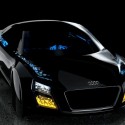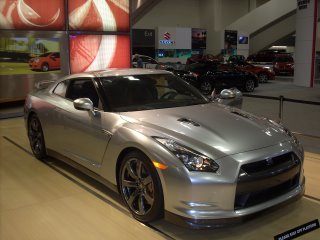Audi Details Autonomous System & Lighting Technologies at CES

Wow, Audi has quite a bit of exciting technology for the next decade. Perhaps the most interesting part about the technology that Audi has presented at the Consumer Electronics Show is the sheer feasibility of it all. This is technology that we can truly imagine and will surely see sooner than later. Without further ado, let's take a look at some of the main technologies presented by the German powerhouse at this year's CES show:
Autonomous Systems
- Audi’s new piloted driving system will allow a car to crawl in traffic at speeds of up to 37 mph without any driver input
- Audi's self-parking system allows a car to drive autonomously into a parking space under the driver’s supervision, stopping immediately if it detects an obstacle. Upon reaching its final position, the car shuts off the engine, deactivates the ignition and locks the doors. Finally, it sends a confirmation to the driver via the key fob or a smartphone.
User Interface
- High-speed LTE networks, with full access to the Internet
- Car-to-Car tech: Cars networked with each other can alert each other to hazards such as icy roads or cross-traffic at intersections, while communication with traffic lights enables vehicles to safely and efficiently cross junctions.
Lighting
- “Matrix Beam,” which splits a light beam up by relying on numerous individual diodes. This way, part of the light beam can highlight objects on the road or go dull so that it doesn’t blind oncoming drivers and drivers in front via their rearview mirror. The Audi Matrix Beam headlights obtain the information they need from a camera, the navigation system or additional sensors.
- The laser tail light is generated by a laser diode and provides drivers behind with a bright, clear signal. In good visibility the fan-shaped laser tail light that shines slightly downward is perceived as a red line on the road and prompts the driver behind to maintain sufficient distance
- Organic LED (OLED): Unlike the LEDs currently in use, which consist of semiconductor crystals, OLEDs are made from an organic material.
- External light design using OLED technology, which Audi is aiming to adopt, will be able to react to the approaching driver, follow his or her movements and highlight the main contours of the vehicle or the door handle
- “Swarm:” “Swarm.” Using the OLEDs on the rear of the car, the lights are able to follow a path. So when a right turn is made, for example, they flow to the right; when the car is braked, they flow rapidly forwards; the faster the car goes, the faster they move. The following driver can then always see right away what the driver of the car in front is doing.
– Evan W.



Full story at Motor Authority
zp8497586rq



